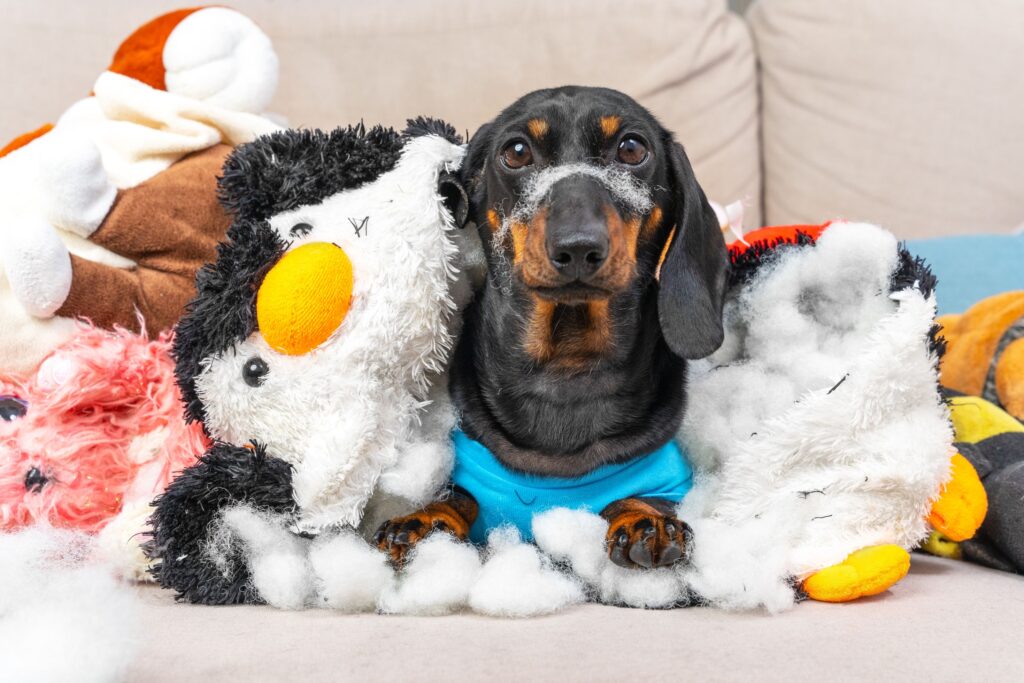
Is Your Home Pet Proof?

Having a pet is a little bit like welcoming a small furry child into your home. It is important to make sure that their environment is safe. If you have never put much thought into how to pet proof your pet’s living space, now is your chance. Arlington Animal Hospital has all the information you need to get it done.
Pet Needs
So what does it take to dog-proof a room? How can you make a space more pet-friendly?
It all starts with thinking about your pet’s needs and safety. Some things to consider include:
- Small objects that might be tempting to eat or chew
- Hazards such as loose electrical wires and dangling blind cords
- Decorative objects such as plants, candles, and essential oil diffusers that might be less than pet-friendly
- Access to potentially harmful items such as medications or trash
- Small spaces where a pet could become stuck
- Large furniture or electronics that could fall
- Potentially toxic plants and flowers
- Outdoor escape routes
- Visual stimulation and other enrichment
- Rest places
- Ease of cleaning
- Non-absorbent fabric choices
Now that you are thinking like a furry child, you can start to think about how to dog-proof a room or even pet-proof your entire home!
Taking the Steps to Pet Proof an Area
Making an area pet proof can be a little overwhelming, but our team has some great tips to help you get started.
- Think about dog proof furniture — There are lots of options for furniture that is made to stand up to your pets, you just need to look for it. Gone are the days that you were doomed to a secondhand couch if you had a dog. Pet-proof, non-absorbent, and/or washable fabrics like leather or performance fiber ensure that you and your pet can lounge in style.
- Decorate with your pet in mind — Think like a dog or cat when arranging your space. Does that potted plant with dangling leaves look tempting? Is that liquid potpourri in a spot where it could get knocked over? Is that antique vase blocking prime window viewing? Consider making adjustments accordingly.
- Get creative with cords — A curious pup or kitten can easily get tangled in unsecured cords. They may also pose an electrocution hazard if chewed. Cord keepers and power strips can keep things a little more organized. Double-sided velcro can also be useful. Cord covers can help keep pets from chewing.
- Use all the space — Get creative when thinking about how to decorate. Cats often love added vertical space achieved with cat-friendly shelving and the like. You could also consider furniture designed for pets, such as an end table to house a litter box or special snuggly spot. A well-positioned window bird feeder or bed can also be a great source of entertainment.
- Use child-proofing accessories — Safety items designed for children are also great for pets. Put a child-proof latch on a cabinet containing medications or cleaning chemicals or use a baby gate to isolate areas of your home that are not pet friendly.
- Be sure that your cat can scratch — Scratching is a natural cat behavior. Supply your kitty with some healthy outlets for this to keep your belongings intact. Most cats prefer a sturdy, vertical surface with a rope. All cats are different, though, and you may have to experiment to determine what your cat likes best.
A pet-proof home is a safe one. We feel that is an attainable goal for all pet parents, and we are here to help. If you have questions or concerns about how to keep your pet’s space as animal friendly as possible, don’t hesitate to contact us.
Contact Us!
2301 Columbia Pike #G-1, Arlington, VA 22204
Phone: (703) 920-5300
Fax: (703) 685-8860
Email: info@myarlingtonvet.com
Office Hours
-
Monday
8 a.m. – 8 p.m.
-
Tuesday
8 a.m. – 8 p.m.
-
Wednesday
8 a.m. – 6 p.m.
-
Thursday
8 a.m. – 6 p.m.
-
Friday
8 a.m. – 6 p.m.
-
Saturday
8 a.m. – 2 p.m.
-
Sunday
CLOSED
- Doctors’ hours are by appointment only.



